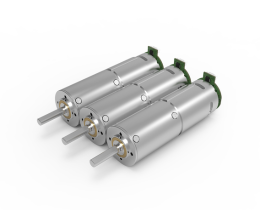Why Your Next Project Needs a 12V 30 RPM DC Gear Motor (and How to Pick the Right One)
Let’s talk about something small but mighty: the 12V DC gear motor. You’ve probably seen these little workhorses in everything from automated gates to medical devices. But what makes a 30 RPM version stand out? And why should you care about its datasheet? Buckle up—this isn’t your average tech rundown.
.webp)
First off, imagine this: You’re designing a solar-powered garden irrigation system. You need a motor that’s quiet, efficient, and won’t quit after a week of rain. A 12V DC gear motor with 30 RPM ticks those boxes. But here’s the kicker—not all motors are built the same. The datasheet? That’s your cheat code. It tells you everything from torque curves to thermal limits. Skip it, and you’re basically guessing.
Q: Why 30 RPM?
A: Think “Goldilocks zone.” Too fast, and you risk overshooting precision tasks. Too slow, and efficiency tanks. At 30 RPM, you get smooth, controlled motion perfect for applications like conveyor belts or robotic arms. Plus, 12V power means compatibility with common battery setups or solar panels. No fancy voltage converters needed.
KPOWER’s version? Let’s just say it’s the quiet kid in class who aces every test. The datasheet reveals a brushless design (translation: less wear, longer life) and a gearbox engineered to minimize backlash. Translation: It’s reliable when consistency matters.
Q: What’s hiding in the datasheet?
A: Glad you asked. Beyond voltage and speed, look for startup current (hint: lower is better for battery life), duty cycle ratings (will it handle 24/7 operation?), and noise levels. KPOWER’s motor, for instance, runs at <45dB—quieter than a fridge hum. Perfect for indoor tech or noise-sensitive environments.
Here’s a pro tip: Don’t just skim the specs. Cross-check them with real-world scenarios. If your project involves heavy loads, check the stall torque—the motor’s “grunt power” when it’s maxed out. KPOWER’s datasheet lists a stall torque of 15 kg-cm, which means it can handle sudden resistance without frying itself.
Still not convinced? Let’s get nerdy for a second. The motor’s efficiency curve peaks at 78% under typical loads. In plain English: It wastes less energy as heat, which matters if your project runs on batteries or solar. Less energy waste = longer runtime.
But here’s the real magic: durability. One user ran KPOWER’s motor in a dusty warehouse for 18 months straight. Zero maintenance. Zero breakdowns. How? Sealed bearings and a corrosion-resistant housing. The datasheet doesn’t just list specs—it tells a story of engineering built to last.
So, next time you’re eyeing a 12V 30 RPM DC gear motor, remember: The datasheet isn’t a boring PDF. It’s a blueprint for success. And if that blueprint includes KPOWER’s tech? You’re not just buying a motor. You’re buying peace of mind.
Fun fact: These motors even pop up in DIY espresso machines. Because why shouldn’t your morning coffee be powered by industrial-grade precision?


































.webp)

